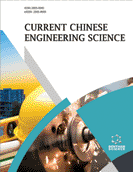Abstract
Electron beam melting (EBM) is an effective and competent additive manufacturing process for fabricating three-dimensional metal parts. EBM process uses raw materials in the form of powders. EBM uses an electron beam as the heat source to carry out the bonding process between powders to consolidate them into a required solid part. It involves the use of data from a 3D computer-aided design (CAD) model to create successive layers of raw material. This process requires a vacuum chamber finding EBM as a suitable technique to process reactive materials like titanium alloys. Apart from titanium alloys, EBM also caters to a wide range of powder materials like alloys of cobalt, Inconel, copper, and steel. The parts fabricated using EBM are fully dense and exhibit good mechanical and morphological properties. The applications of EBM include automotive, tooling, aerospace, and biomedical implant industries.
Keywords: Additive manufacturing, Aerospace, Automotive, Beam intensity, Biomedical implants, Cobalt, Electron beam, Hatch space, Layered manufacturing, Layer preparation, Metal alloys, Multi-materials, Nickel, Powder bed fusion, Process parameters, Rapid prototyping, Scan speed, Steel, Titanium, Tooling.






















